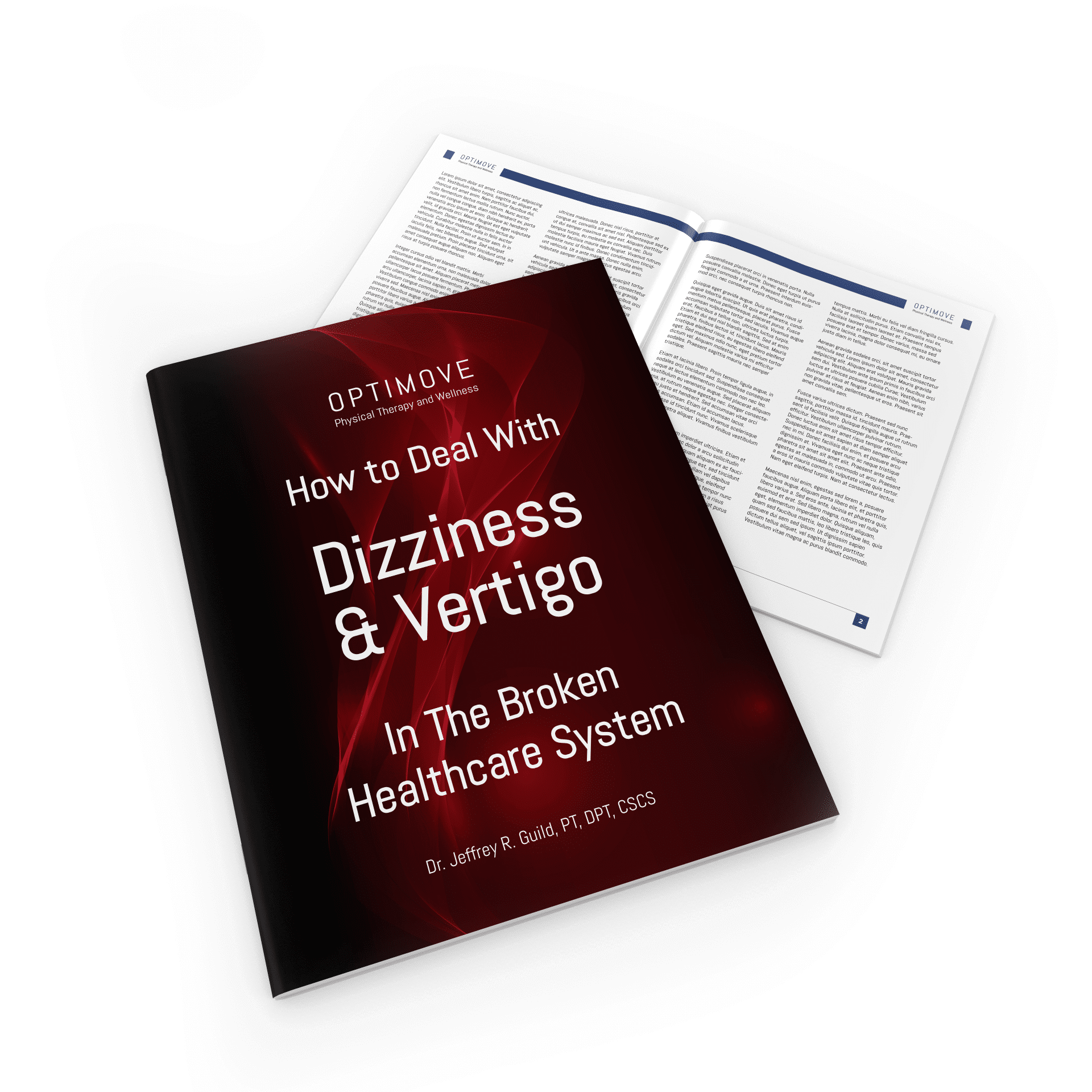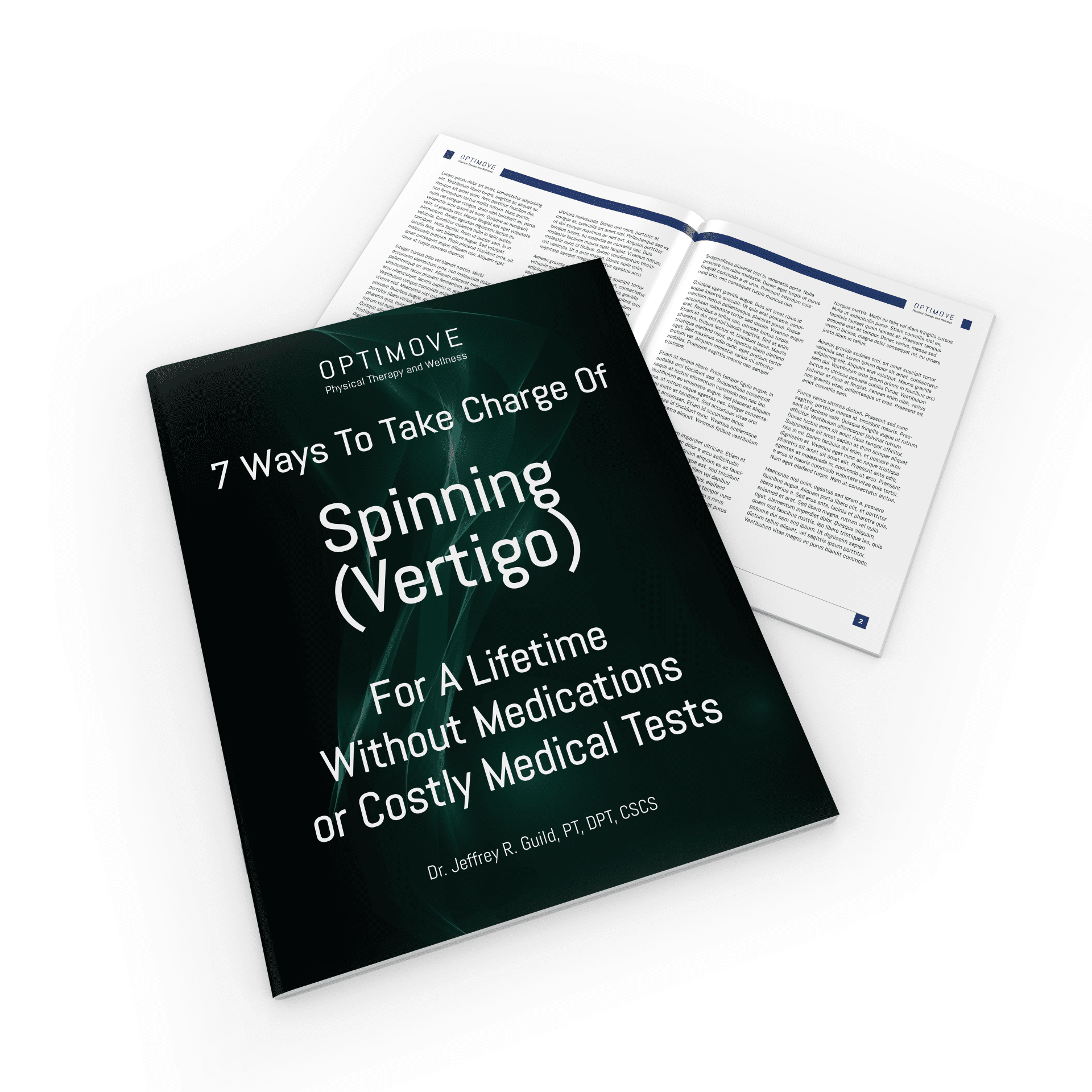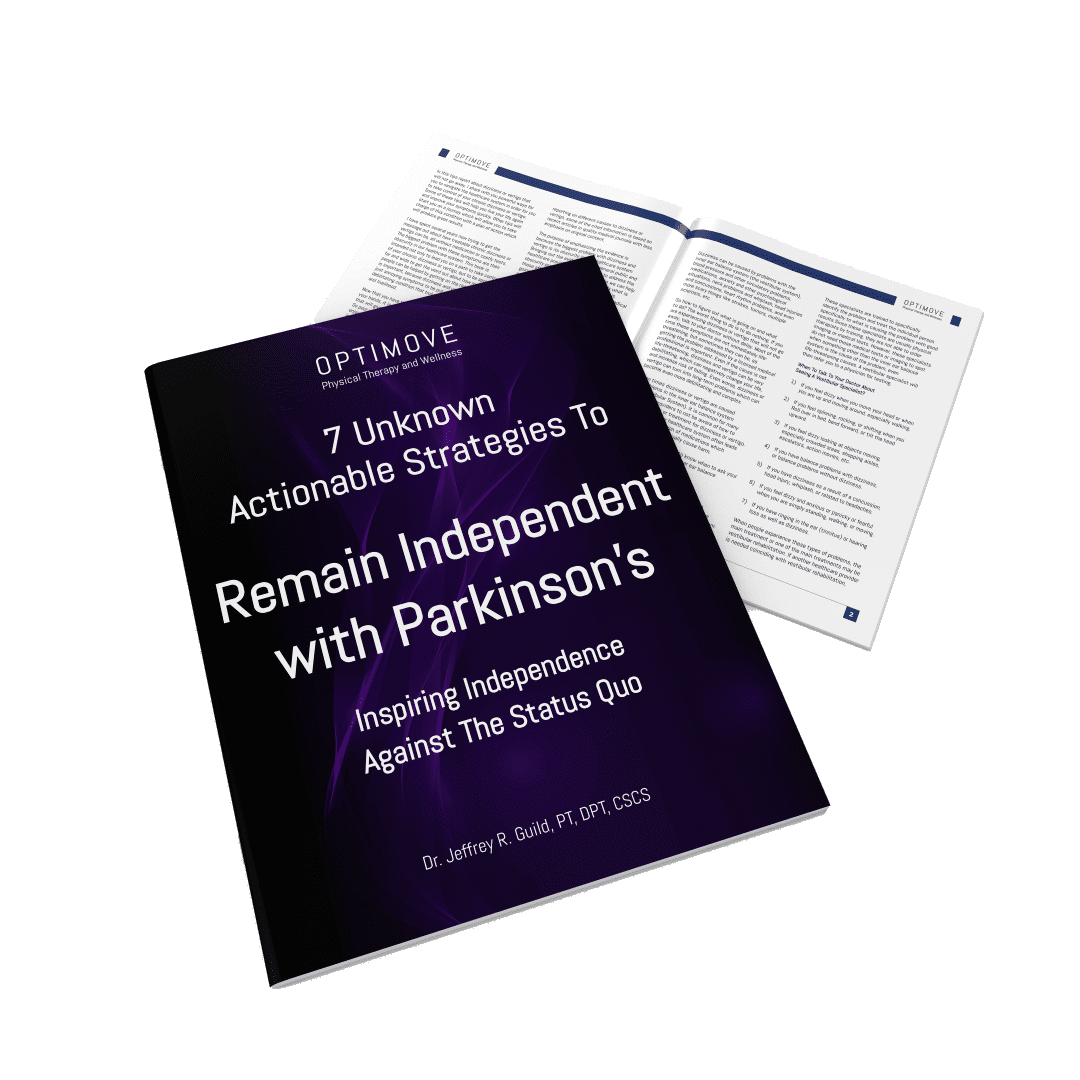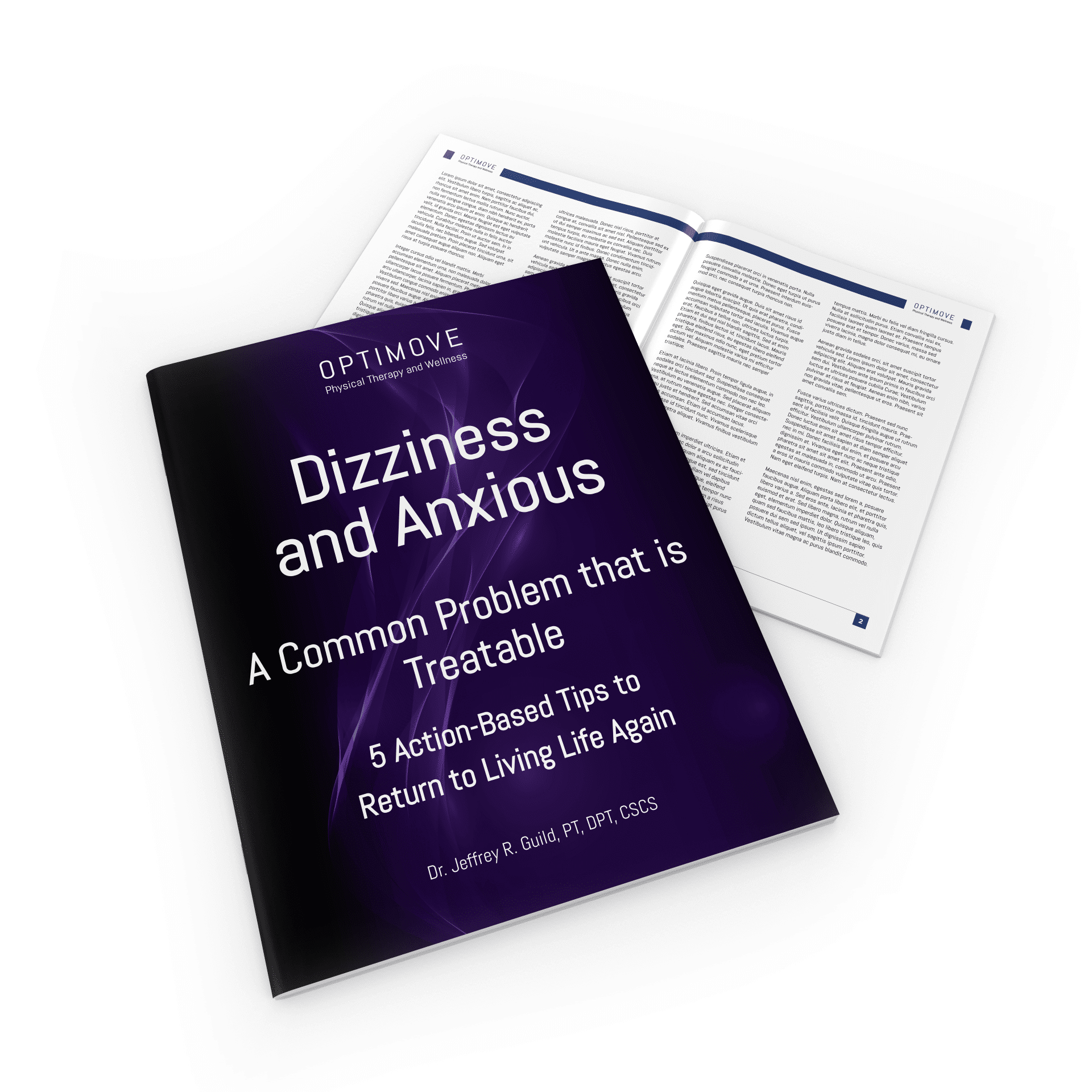What The Science Says About How To Prevent BPPV From Returning. Full Analysis.
– – – – –
For a deeper understanding, we’ve attached the research article links discussed in the video below.
Yang Z, Li J, Zhu Z, He J, Wei X, Xie M. Effect of vitamin D supplementation on benign
paroxysmal positional vertigo recurrence: A meta-analysis. Science Progress. 2021;
104(2): 1-14.
Jeong SH, Lee SU. Prevention of recurrent benign paroxysmal positional vertigo with
vitamin D supplementation: a meta-analysis. Journal of Neurology. 2022; 269(2):619-
626.
https://pubmed.ncbi.nlm.nih.gov/32767116/
AlGarni MA, Mirza AA, Althobaiti AA, Al-Nemari HH, Bakhsh LS. Association of benign
paroxysmal positional vertigo with vitamin D deficiency: a systematic review and meta-
analysis. European Archives of Oto-Rhino-Laryngology. 2018;275(11):2705-2711
https://pubmed.ncbi.nlm.nih.gov/30302575/
Casani AP, Gufoni M. Recurring benign paroxysmal positional vertigo after successful
canalith respositioning manoeuvers. Acta Otorhinolaryngol Ital. 2023;43(1):S61-S66
https://pubmed.ncbi.nlm.nih.gov/37698102/
Li S, Wang Z, Liu Y, Cao J, Zheng H, Jing Y, Han L, Ma X, Xia R, Yu L. Risk Factors for
the Recurrence of Benign Paroxysmal Positional Vertigo: A Systematic Review and
Meta-Analysis. Ear Nose Throat J. 2022;101(3):NP112-NP134.
https://pubmed.ncbi.nlm.nih.gov/32776833/
Sfakianaki I, Binos P, Karkos P, Dimas GG, Psillas George. Risk Factors for Recurrence
of Benign Paroxysmal Positional Vertigo. A Clinical Review. J Clin Med.
2021;10(19):4372.
https://pubmed.ncbi.nlm.nih.gov/34640391/
Chen J, Zhang S, Cui K, Liu C. Risk factors for benign parosysmal positional vertigo
recurrence: a systematic review and meta-analysis. J Neurol. 2021;268(11):4117-4127.
https://pubmed.ncbi.nlm.nih.gov/32839838/
Jeong SH, Kim JS, Kim HJ, Choi JY, Koo JW, Choi KD, Park JY, Lee SH, Choi SY, Oh
SY, Yang TH, Park JH, Jung I, Ahn S, Kim S. Prevention of benign paroxysmal
positional vertigo with vitamin D supplementation: A randomized trial. Neurology.
2020;95(9):e1117-e1125.
https://pubmed.ncbi.nlm.nih.gov/32759193/
–
Do you or an aging loved one struggle with balance and falls? There is hope. Let us empower you to maintain your independence at home and in the community.
Click the link below to book your free in-home discover visit: https://optimovedfw.com/balanceandfallsfb
00:00:00:01 – 00:00:21:22
Unknown
Today, we’re going to go in-depth on how to reduce the risk of positional vertigo or benign proximal positional vertigo from coming back once has been treated successfully. This is a common problem and a frustration for a lot of people. I will give the most powerful ways to prevent BP from returning based on the science. Then we’ll take a deep dive into the evidence itself.
00:00:22:02 – 00:00:40:15
Unknown
So there you can see this information and where it’s coming from and how valid it is. Hi, I’m Dr. Jeffrey Guild, physical therapist, the founder of Art to Move. We provide information for people suffering with dizziness, balance and fall problems, mobility with aging issues, and much more to help people be more active and independent in their homes and the community.
00:00:40:16 – 00:01:00:18
Unknown
If you like information like this, subscribe to our channel so you can get more information just like this. So many of our clients get frustrated about their positional vertigo coming back once it’s been treated and maybe you’ve experienced the same problem. It can be incredibly frustrating worrying about such a terrifying and life altering experience that keeps coming back.
00:01:00:18 – 00:01:26:05
Unknown
Though you may have found a solution to get this treated successfully, but the very thought of it happening again so randomly is so out of your control. It puts a lot of heavy weight on a lot of people. So today we’re going to get into some real answers on the topic and what the evidence tells us. So what can you do to reduce the risk of positional vertigo from coming back once you get it treated by a professional health care provider?
00:01:26:07 – 00:01:46:10
Unknown
And if you are a health care professional yourself, what can you tell your patients or your clients about things that they can do to reduce the risk of benign paroxysmal positional vertigo from coming back once you or someone you refer them to treat their vertigo successfully? And what you really want to know is what does the evidence tell us?
00:01:46:12 – 00:02:06:22
Unknown
And when I say positional vertigo, I am talking about specifically benign proximal positional vertigo, the condition where the crystals get in your inner ear balance system and into a place where they should not be giving people a false sense of spending and in some cases an elaborate grouping of symptoms such as dizziness, unsteadiness, lightheadedness and a lot more.
00:02:07:02 – 00:02:31:12
Unknown
Now, if your health care provider, and especially if you’re a physician or a mid-level, this information will give you the additional actionable items with your patients. Since a lot of these causes are things that you address with your patients all the time. Now, no matter what type of health care provider you are, these are powerful points of patient information that you can use to reduce the risk of patients getting vertigo again and again.
00:02:31:17 – 00:02:58:04
Unknown
And with only looking at the highest level of evidence, we’ll show that to you. Basically right now. So the most actionable things that you can do to prevent vertigo from returning based on the evidence is to make sure your vitamin D levels are normal and treat it with your doctor. If it is not, be proactive with your doctor about screening your bone density and treat and reduce the risk of bone density problems as much as you can.
00:02:58:04 – 00:03:30:15
Unknown
The second thing you can do is make sure that your blood pressure, blood sugar and lipid levels are good because these are cardiovascular risk factors which go into the risk of positional vertigo returning as well. But the other thing you can do is treat problems of head trauma. So reduce your risk of falling overall in general because people who get positional vertigo due to head or neck trauma have a significant increase risk of positional vertigo returning compared to other causes that we consider idiopathic.
00:03:30:15 – 00:03:54:20
Unknown
So basically for unknown reasons and on similar lines, taking care of your neck health, your posture and treating neck pain problems very proactively so you can prevent arthritis in the neck because this is also a risk factor of positional vertigo returning. If the vertigo has been treated. Now, if you have migraines, be very proactive with the neurologists so that they can keep you as well medically managed with your migraines as much as possible.
00:03:54:21 – 00:04:17:08
Unknown
Okay, So those are the most actionable things that you can do as someone suffering from BP or if you’re a health care provider and you want to give your patients actionable things that they can do to prevent the vertigo from returning. So are there other risk factors that are more out of your control? And of course, there are Those risk factors are consistently across the evidence advanced age and being female.
00:04:17:09 – 00:04:44:20
Unknown
So where all this information is coming from is very high quality evidence as of this recording as of January of 2024. So what does the evidence say? So let’s start talking about the tip of supplementing vitamin D and preventing bone density problems. Supplementing vitamin D is the most studied with its own independence, systematic reviews and meta analyzes and one large scale randomized controlled trial where they take taking people that’s been supplemented with vitamin D compared to a group that has not.
00:04:45:00 – 00:05:08:05
Unknown
Now we’ve used systematic reviews and meta analyzes as very high levels of evidence because these basically take a large number of studies and are able to pour together a lot of individuals and to be able to gather a lot of statistical data about a particular topic. So and they can add a lot of validity to the findings. So let’s get into these a little bit.
00:05:08:05 – 00:05:33:20
Unknown
To recent peer reviewed studies were published both systematic reviews and meta analyzes. One was published in 2021 in the Journal of Science Progress and another in 2022 in the Journal of Neurology. And those determined that treating people who have low vitamin D significantly reduces the risk of their BPD from returning compared to people who have not been treated for their Vitamin D deficiencies.
00:05:33:23 – 00:06:01:15
Unknown
Now, these studies come from very high levels of evidence, reviewing other studies and then combining them into a larger statistical pool of data. So it must be noted that each of these meta analyzes used mostly controlled trials that were not randomized and case serious studies to pool the data together, but did include one major randomized controlled trial in the journal Neurology in 2020 with over a thousand subjects which they followed over a year.
00:06:01:17 – 00:06:24:23
Unknown
So they treated over 1000 patients with BP V successfully across eight hospitals, and basically half of the people received the supplementation of vitamin D and along with calcium. And then the other group did not receive anything. And then the researchers followed up with them a year later. So this study showed a significant difference in the group that was treated with vitamin D and the calcium.
00:06:25:02 – 00:06:50:04
Unknown
Now, these findings have been supported by several review studies which looked at the risk factors of recurring BP. And so the most was the systematic review and meta analysis from 2021 published in the journal Neurology, which analyzed over 3000 patients with both prospective and retrospective studies. And what they found was that vitamin D deficiency was a significant risk factor for recurrent BP.
00:06:50:04 – 00:07:17:17
Unknown
PB Osteoporosis was also one of those risk factors which fits the overall bone health theme of positional vertigo. Coming back, what makes this meta analysis strong is the use of the prospective studies, which are considered stronger studies compared to the retrospective studies. This is because in prospective studies the researchers established their study first and follow a group of people over time, instead of looking backwards at the records, which is done in retrospective studies.
00:07:17:21 – 00:07:47:08
Unknown
There were several other reviews published in peer reviewed journals that support both a vitamin D deficiency and bone density being risk factors for BP coming back. These include a clinical review in 2021, published in the Journal of Clinical Medicine and most recently a 20 year retrospective study of 1400 people published in 2023 by Cassini and Ghaffari. However, a similar study published in 2020 in ear, Nose and Throat Journal, did not support the connection with Vitamin D.
00:07:47:08 – 00:08:12:12
Unknown
However, this 2020 study did support the risk factors of osteoporosis and osteopenia, which fits into the bone health pattern. Now, what made this study strong is that it was a systematic review and meta analysis, but only included retrospective studies, and no prospective studies showed the opposite to be true. Unlike the later study, which did support the significant difference of vitamin D, reducing the risk of vertigo, returning.
00:08:12:14 – 00:08:38:04
Unknown
Now, as of this recording, small randomized controlled trials have been published that are continuing to investigate treating vitamin D deficiency to reduce the risk of BP returning. So the investigation is working towards larger and better randomized controlled trials. There is even some evidence to support an increase in BP in the population during the early spring months because of reduced vitamin D exposure from the sun during the winter months.
00:08:38:10 – 00:09:04:03
Unknown
Now, this debate is continuing and there is a debate whether this is due to vitamin D or barometric pressure, given the overall body of evidence supporting the reduction of vertigo returning with vitamin D supplementation, the overall health benefits of normal vitamin D levels and supplementing them if those levels are not normal, is a great way to reduce the risk of vertigo returning and be proactive with your doctor about your bone density.
00:09:04:05 – 00:09:28:03
Unknown
Now it is important to get the right dosage for vitamin D and the guidance on calcium supplementation because both of these supplements can cause harm if they’re not taken in the right way and without the right gains from your doctor. So to make sure you talk to your doctor before supplementing these. So what about all those other risk factors, especially those cardiovascular related risk factors such as lipid levels, blood pressure and blood sugar levels?
00:09:28:05 – 00:09:56:08
Unknown
So every single peer reviewed study we mentioned looked at these cardiovascular risk factors and all of them two systematic reviews and meta analyzes and one clinical review study supported these cardiovascular risk factors associated with vertigo returning once it’s been properly treated. Okay, So that’s been a lot so far. Hopefully you’ve gotten the main points Vitamin D and bone density and cardiovascular risk factors such as blood pressure, blood sugar and lipid health.
00:09:56:14 – 00:10:20:04
Unknown
So the reasons for cardiovascular risk factors increase in the return of vertigo returning are many and have a lot of theory and anatomical studies behind them and are outside the scope of this episode. So stay tuned for future episodes and we’ll address that topic all on its own because it’s a lot. All right. So let’s summarize the quality of the evidence we’ve talked about, just to review the difference between retrospective and prospective studies.
00:10:20:06 – 00:10:54:15
Unknown
Retrospective studies means the researchers took a group of people and looked at their information in the past, whereas the prospective studies basically sets a hypothesis and follows the group of people over a period of time and monitors their condition over time. Prospective studies are generally considered higher quality studies compared to retrospective studies. However, it does help with a lot of these retrospective studies that the number of people stayed are in the thousands and many years and decades are analyzed, especially if they’re included in a meta analysis where a lot of these retrospective studies are pulled together.
00:10:54:16 – 00:11:21:23
Unknown
However, what is lacking from all this research about recurring positional vertigo is the number of very large prospective studies and many large randomized controlled trials to create a meta analysis of all very large randomized controlled trials. Now, the clinical Review study published in the Journal of Clinical Medicine in 2021 did include seven prospective studies that followed groups of people over time, but did not include a meta analysis.
00:11:21:23 – 00:11:45:15
Unknown
So they did not statistically pull all that data together, whereas the 2020 study published in the ear, Nose and Throat Journal only included retrospective studies, but did include a meta analysis, thereby statistically analyzing all these studies together that looked at the patients in the past. And remember, this was the study that showed no significant difference for the risk of vitamin D deficiency.
00:11:45:17 – 00:12:06:05
Unknown
So the analyzed and the quality of the evidence can be messy at times. And that is why ongoing research continues to provide more clarity into these topics. Okay, I digress. So, so far, vitamin D levels and cardiovascular risk factors. So what about other risk factors? What about trauma? This risk factor showed up in two review studies we talked about earlier.
00:12:06:05 – 00:12:37:02
Unknown
So the 2020 study from ear, nose and Throat Journal and the Journal of Clinical Medicine in 2021 studied this topic. Each of these reviews showed the increased risk of vertigo returning when the cause of the vertigo was trauma due to head injuries, whiplash and had neck surgery compared to vertigo that was cause idiopathic. Lee So basically for reasons that are unknown, this is why preventing falls and promoting quality, balance and physical abilities is so important because falls commonly results in head and whiplash type injuries.
00:12:37:04 – 00:13:07:03
Unknown
And while preventing auto accidents and other traumatic injuries may be less in our hands, regular exercise, physical therapy and being proactive with fall prevention is much more in our control. Okay, so this makes sense. But what does arthritis in the neck have to do with BP coming back? So this comes from both the meta analysis. In 2020, a retrospective studies in ear, nose and throat journal, and a clinical review of prospective and retrospective studies published in 2021 in the Journal of Clinical Medicine.
00:13:07:06 – 00:13:30:00
Unknown
Now, the 2021 study gives a good analysis as to why osteoarthritis may increase the risk of vertigo returning. Now the thought here is the bony protrusions that develop in the vertebrae in the neck would cause circulation to be insufficient, which leads to circulation problems basically in the vestibular inner ear balance organ because the blood vessels in the neck go up to that area.
00:13:30:02 – 00:13:52:05
Unknown
So this lack of circulation is thought to lead to promoting the dislodging of the calcium carbonate crystals, which is what causes the BP in the first place. The other possible causes includes difficulty for clinicians to treat BP and people with arthritis in their neck, which can lead to insufficient treatment and the transferring of BP from one canal to another.
00:13:52:09 – 00:14:19:09
Unknown
Okay. The cardiovascular and blood flow problems leading to the return of vertigo is something to be covered in the app. So we’ll look at cardiovascular risk factors because the two topics tend to go hand in hand. Now, the second explanation here would only make sense, if you are familiar with the testing and treatment of BP. So the gold standard test is called the Dex Hall pipe, which requires the head to be brought back at greater than 45 degrees or so.
00:14:19:14 – 00:14:42:02
Unknown
So the gold standard test is the Dex hall pipe, which requires the head to be brought back an angle of 45 degrees off the treatment table or the bed. Now, this usually requires a decent amount of neck motion tilting backward a lot like when you’re looking up at an airplane. A lot of people with arthritis in their neck are limited with this motion and especially with this motion.
00:14:42:05 – 00:15:04:12
Unknown
So this limitation can interfere with the testing and also the treatment of vertigo, because the parts of the treatment also require a lot of neck motion backwards as well. So but while is true, there are multiple maneuvers for vertigo that do not require that type of neck motion. And no matter what maneuver you are doing as the clinician, the table can be tilted.
00:15:04:12 – 00:15:25:12
Unknown
So you actually do not have to have any neck motion at all. And we do tilt the table all the time with our clients because so many of them are over the age of 85. But this is a common problem and could have certainly affected the research. So then there’s a tip on migraines and that again is a whole other episode by itself and its own research topic as well.
00:15:25:12 – 00:15:54:07
Unknown
So stay tuned for future episodes about migraines by themselves and also migraines and positional vertigo. But no matter what, if you have migraines and they’re not properly managed by a specialist, preferably a neurologist, you’ll be much better off if those migraines are appropriately medically managed compared to if they are not. So the most actionable items supported by the evidence that you can do to prevent vertigo from returning is make sure your vitamin D is normal and treat it with your doctor.
00:15:54:07 – 00:16:18:16
Unknown
If it’s not, be proactive with your doctor about screening your bone density and bone health and try and reduce the risk of low bone density as much as you can. Same thing with your blood pressure, blood lipid levels and blood sugar levels, because these types of cardiovascular risk factors significantly increase the risk of vertigo returning as well. Treat your balance problems so that you don’t get whiplash and head injuries.
00:16:18:22 – 00:16:49:01
Unknown
And because those types of injuries are most associated with returning of vertigo compared to if you get vertigo for basically unknown idiopathic reasons, take care of your neck and reduce the risk of arthritis in your neck and be proactive. If you’ve already been diagnosed with arthritis because making sure that your neck is doing as well and moving as much as possible will reduce the risk of your neck affecting the blood flow up to your vestibular inner ear balance organ as well.
00:16:49:04 – 00:17:08:05
Unknown
And if you have migraines, be proactive and make sure those migraines are being treated by a neurologist. And so make sure that you are well medically managed if you have migraines. So hope you enjoyed this episode. Look forward to getting more information out to you and subscribe to our channel. Share it with a friend. If you found this information impactful and meaningful.






